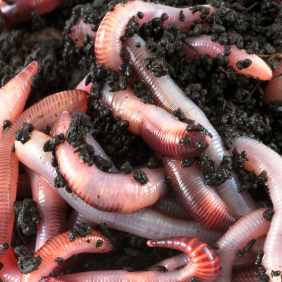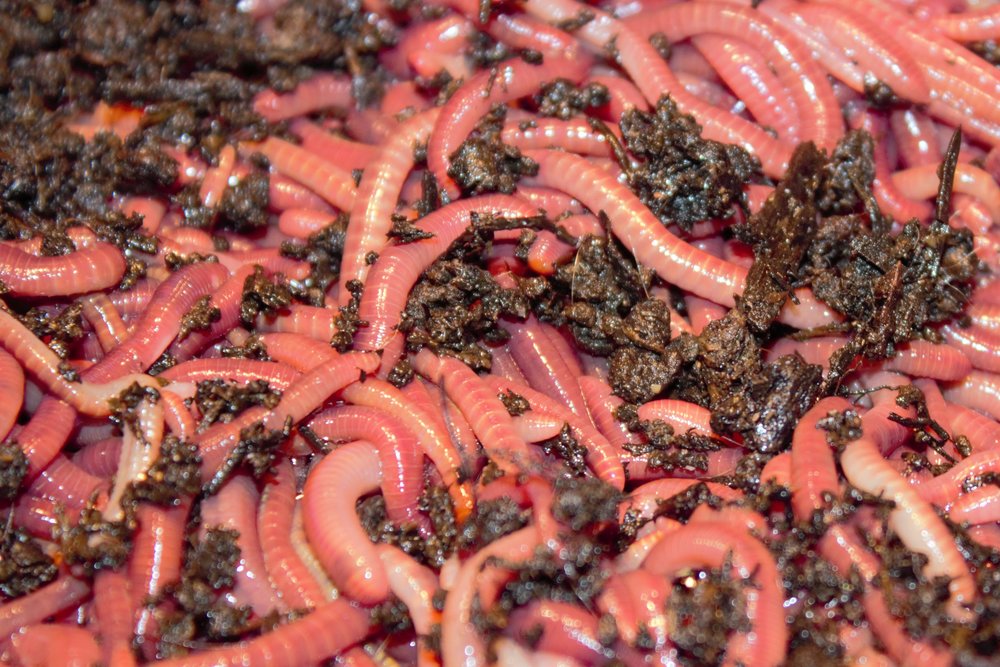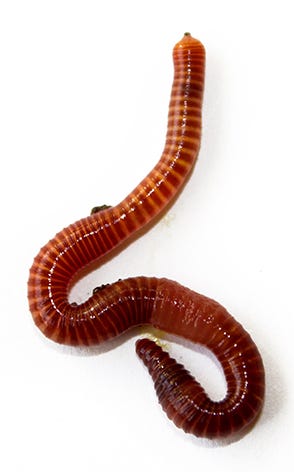Composting-friendly red wigglers: What you need to know
The Role of Red Wigglers in Lasting Horticulture
The combination of red wigglers into lasting gardening techniques uses a compelling approach to boosting soil health and lowering natural waste. These organisms not just transform kitchen scraps right into nutrient-dense compost via vermicomposting however also freshen the soil, advertising optimal problems for plant growth. As they damage down complicated natural materials, they proactively promote a thriving microbial ecological community necessary for sustainable farming. However, the effects of utilizing red wigglers expand beyond simple composting; their role in forming a more sustainable future warrants a much deeper exploration of their benefits and functional applications.
Recognizing Red Wigglers
Red wigglers, scientifically understood as Eisenia fetida, are a types of earthworm renowned for their duty in lasting horticulture and composting practices - red wigglers. These worms flourish in disintegrating raw material, making them particularly effective in converting kitchen area scraps and backyard waste right into nutrient-rich garden compost. Unlike traditional earthworms, red wigglers have a higher resistance for differing dampness degrees and can flourish in environments with plentiful natural product
(Western North Carolina Worm Farms)Typically, red wigglers are smaller than their earthworm equivalents, normally measuring in between 3 to 4 inches in length. They have a reddish-brown pigmentation and have a segmented body framework that aids in their burrowing and feeding tasks. These organisms are hermaphroditic, suggesting each private possesses both male and women reproductive organs, which enables reliable population development under ideal problems.
The habitat choices of red wigglers include wet, dark atmospheres rich in organic content, such as garden compost bins or worm ranches. Their ecological duty prolongs beyond composting; they are important in aerating the dirt and helping with nutrient biking, which ultimately adds to much healthier garden ecological communities. red wigglers. Understanding the biology and habits of red wigglers is vital for those looking for to carry out effective vermicomposting in sustainable horticulture
Advantages of Vermicomposting
Vermicomposting deals countless benefits that boost sustainable gardening methods and add to ecological health. One of the main advantages is the transformation of organic waste into nutrient-rich compost, which enhances dirt framework and fertility. The spreadings produced by red wigglers are packed with useful microbes and crucial nutrients, making them an outstanding natural fertilizer.
Furthermore, vermicomposting dramatically reduces landfill waste. By diverting kitchen scraps and yard waste from garbage dumps, this method not only lessens methane discharges-- a powerful greenhouse gas-- yet additionally advertises a round economic situation, where waste is repurposed as a source.
An additional benefit is the improvement of dirt aeration and drain (red wigglers). The burrowing activity of red wigglers creates channels in the soil, permitting air and water to pass through even more conveniently, therefore promoting a healthier root system for plants
Moreover, vermicomposting can be done on a small range, making it obtainable for city garden enthusiasts and those with restricted space. This method urges ecological stewardship and recognition, as individuals become more involved with their waste monitoring methods. Eventually, vermicomposting represents a lasting, reliable, and green technique to gardening that benefits both plants and the earth.
Just How to Begin Vermicomposting
Starting your very own vermicomposting system can be a satisfying venture that enhances your lasting gardening practices. To start, choose an appropriate container, such as a plastic container or wooden box, with good water drainage and ventilation. The dimension will depend on the quantity of kitchen scraps you generate; a container of 10-14 gallons usually suffices for a house.
Next, prepare the bed linens material. Shredded paper, cardboard, and coconut coir are outstanding options, supplying a comfortable habitat for the red wigglers. Aim for a bed linens depth of regarding 4-6 inches, which ought to be wet but not soaked.
Once the bed linen is established, introduce your worms. Red wigglers (Eisenia fetida) are the most appropriate for composting. Beginning with around one pound of worms for each 2-3 extra pounds of kitchen area scraps weekly.
Begin including kitchen waste, preventing meat, milk, and oily foods, as these can draw in bugs and create odors. Regularly keep an eye on the container's moisture levels and temperature, ensuring it stays within the ideal variety for worm task. With these initial steps, you'll be well on your method to developing nutrient-rich compost for your garden.
Preserving a Healthy And Balanced Worm Bin
A flourishing worm container calls for consistent care and interest to keep an optimum environment for the red wigglers. Secret variables to monitor consist of dampness levels, temperature, and food supply. Maintaining a wetness degree similar to a wrung-out sponge is vital; way too much water can result in anaerobic problems, while as well little can dehydrate the worms.
Temperature level is additionally essential, as red wigglers thrive in a variety of 55 to 77 degrees Fahrenheit. Extreme temperatures can stress the worms, potentially causing death. Consequently, positioning the container in a climate-controlled location or making use of shielding products can assist control temperature fluctuations.

Finally, oygenation is essential. Routinely transforming the bed linen and utilizing a fork or shovel can prevent compaction and advertise airflow, guaranteeing a healthy, successful environment for the red wigglers. By sticking to these practices, garden enthusiasts can maintain an efficient worm bin that supports lasting gardening initiatives.
Influence On Dirt Health
Enhancing dirt health with the usage of red wigglers try these out is an essential facet of sustainable gardening. These worms, recognized scientifically as Eisenia fetida, play a critical function in boosting soil structure and fertility. By taking in natural matter, red wigglers damage down intricate materials into less complex substances, a process referred to as vermicomposting. Completion product, worm castings, is abundant in essential nutrients, including nitrogen, phosphorus, and potassium, which are essential for plant growth.

(Where To Buy Worms In North Carolina)Research studies have actually revealed that dirts enriched with worm castings display raised microbial activity and improved fertility, resulting in greater plant returns. By including red wigglers into gardening methods, gardeners not only enhance their dirt yet also add to a much more lasting farming system, stressing the interconnectedness of dirt wellness and ecological stewardship.

Final Thought
In final thought, red wigglers substantially add to lasting gardening through their effective vermicomposting techniques. Their ability to transform natural waste into nutrient-rich garden compost improves dirt fertility and supports a diverse microbial ecological community. In addition, their burrowing task improves soil aeration and water retention, profiting plant health and wellness. By promoting waste reduction and promoting a circular economic situation, red wigglers arise as vital elements in eco-friendly horticulture efforts, underscoring their vital duty in environmental sustainability.